Maybe you have heard of Miroslav Tichý (1926 – 2011), the eccentric and unsuspecting man with the homemade cardboard, plywood and tin cameras. Call him a Czech version of a Vivian Maier if you will – only his photo taking was never really a secret other than the odd looking cameras he used really worked. He is man who will be remembered for snapping photos of unsuspecting locals (especially women) going about their days in and around Kyjov, Czech Republic.
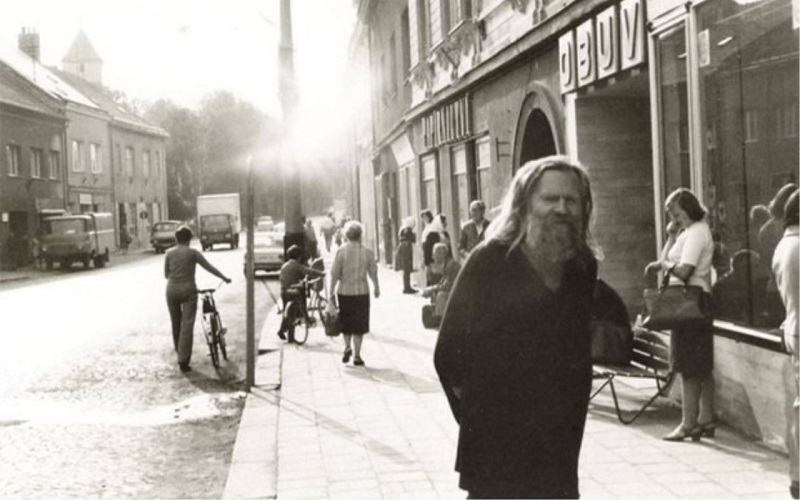
His biography on Facebook states: “This last master of the 20th century photography was discovered for the art world in 2004 and left a radical and unorthodox body of photography focussed on the female figure. After studying at the Academy of Arts in Prague, Miroslav Tichý withdrew to a life in isolation in his hometown of Kyjov, Moravia, Czech Republic. In the late 1950s he quitted painting and became a distinctive Diogenes-like figure. From the end of the 1960s he began to take photographs mainly of local women, in part with cameras he made by hand. He later mounted them on hand-made frames, added finishing touches with pencil, and thus moved them from photography in the direction of drawing. The result are works of strikingly unusual formal qualities, which disregard the rules of conventional photography. They constitute a large oeuvre of poetic, dreamlike views of feminine beauty in a small town under the Czechoslovak Communist régime.”
That is an interesting biography to say the least…
First let’s take a look at the cameras he fashioned himself out of materials like cardboard, tin and plywood…
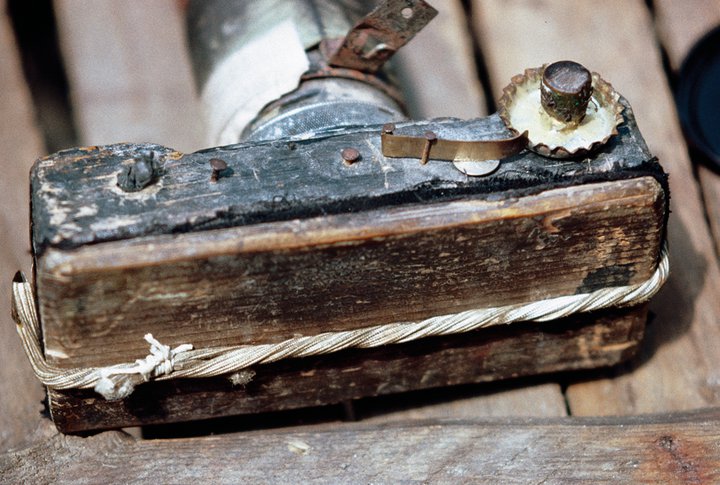
Homemade camera, courtesy Tichy Ocean
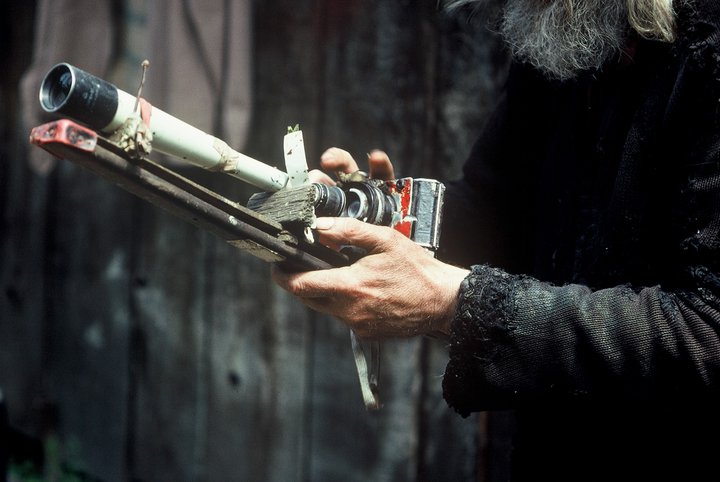
Teleobjective © Roman Buxbaum
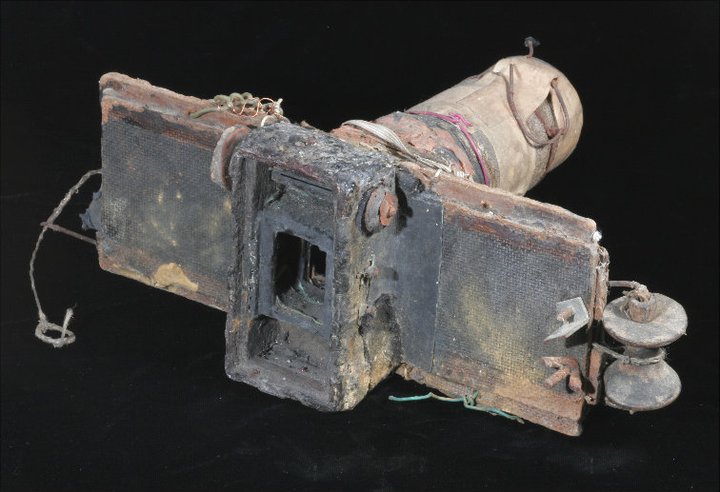
Homemade camera, courtesy Tichy Ocean
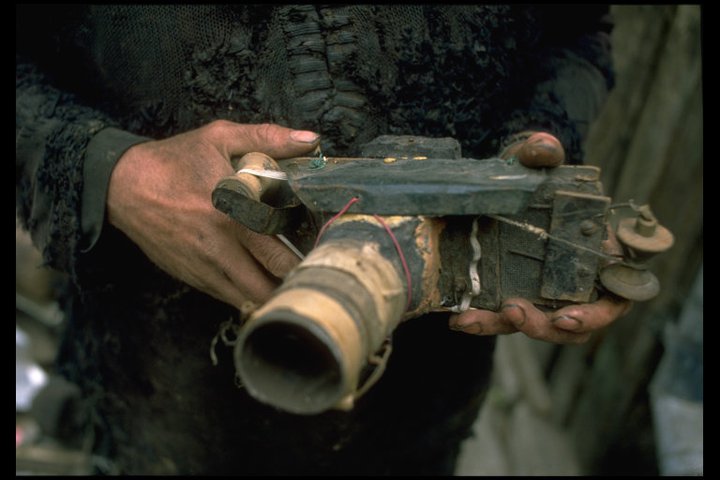
Homemade camera, courtesy Tichy Ocean
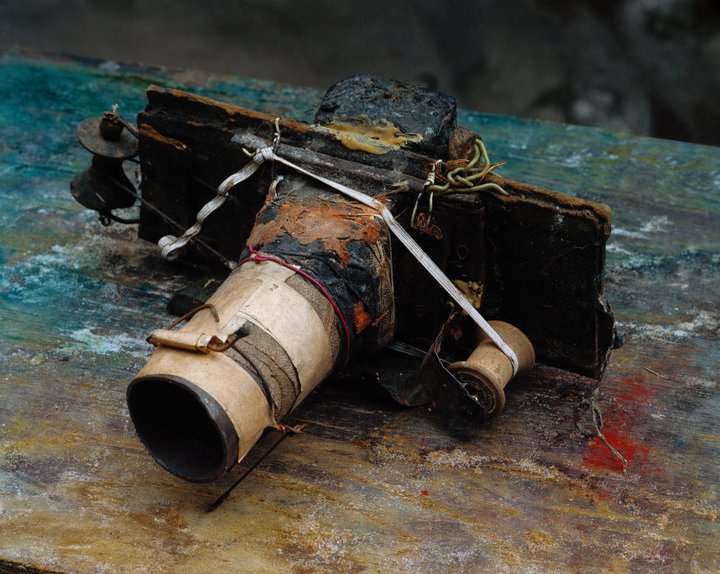
Homemade camera, courtesy Tichy Ocean
It certainly proves that where there is a will, there is a way.
Using homemade cameras Tichy took blurry, mottled photographs in his Moravian home town Kyjov. His anonymous portraits depict mothers, waitresses, students, sitting on park benches, waiting for the bus or in conversation with a friend – moments from everyday life and often framed by elaborate mounts…
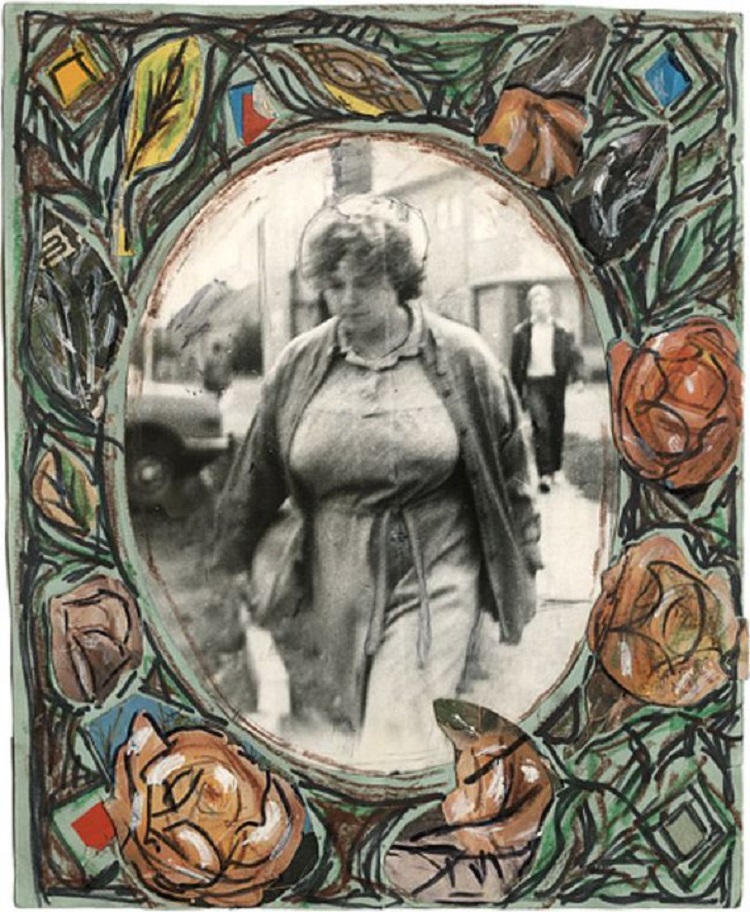
Miroslav Tichý, MT Inv. no.: 1-34, courtesy Tichy Ocean
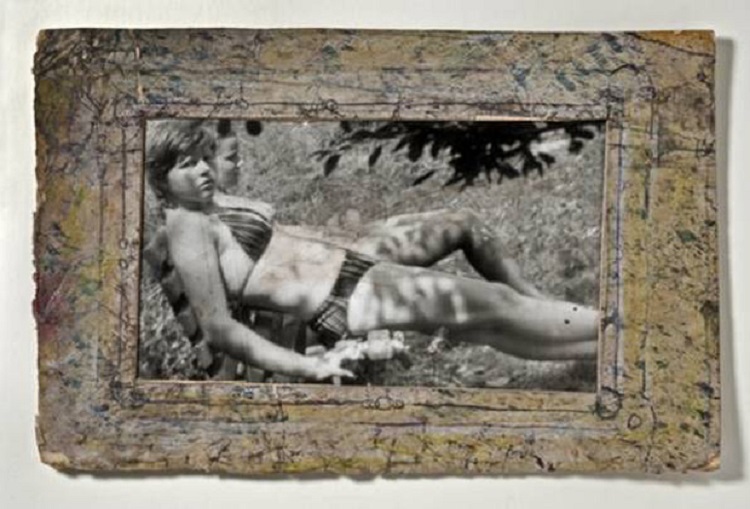
From City of Women by Miroslav Tichý
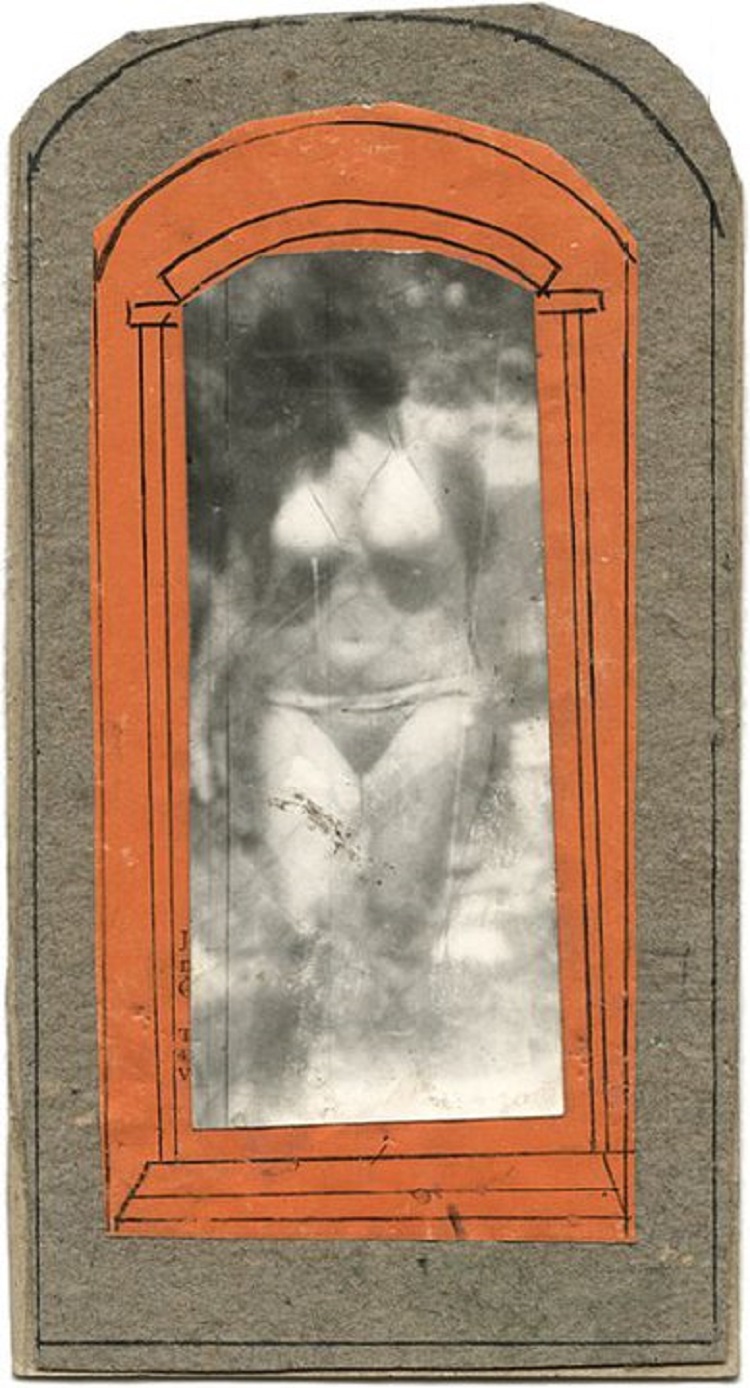
Miroslav Tichý, MT Inv. no.: 1-28, courtesy Tichy Ocean
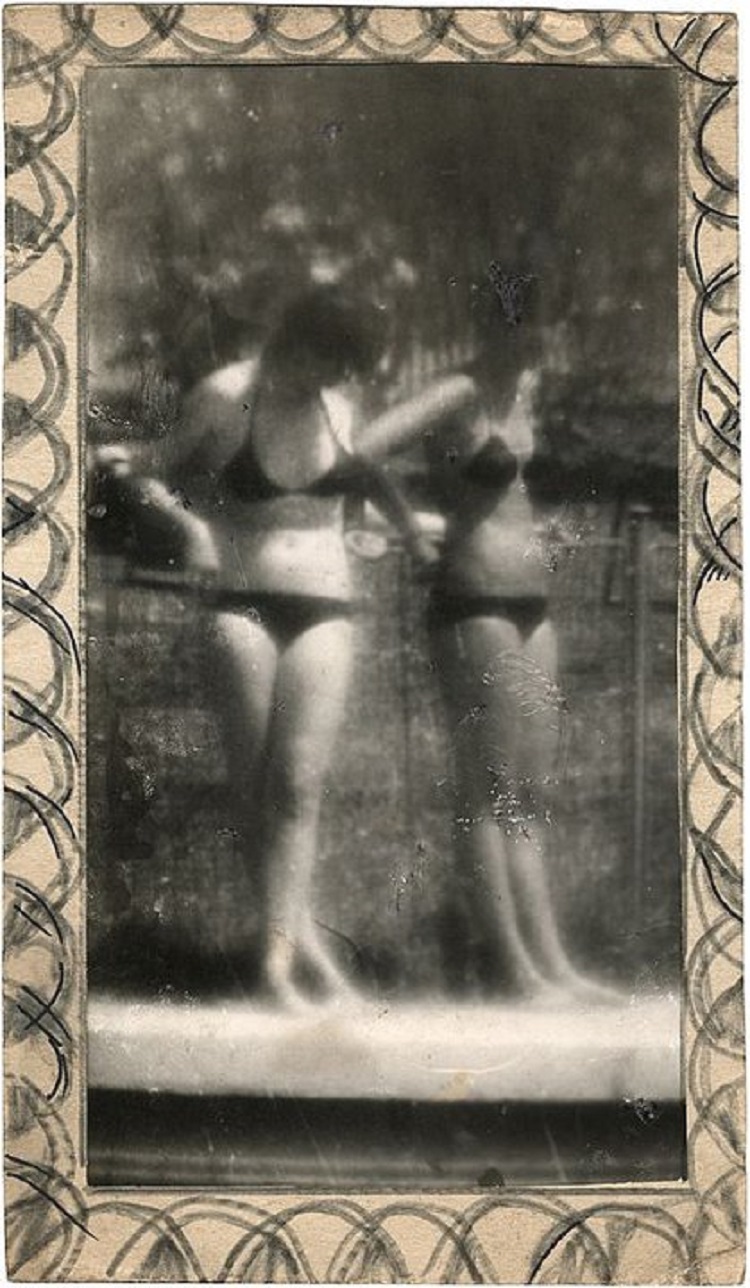
Miroslav Tichý, MT Inv. no.: 3-8-17, courtesy Tichy Ocean
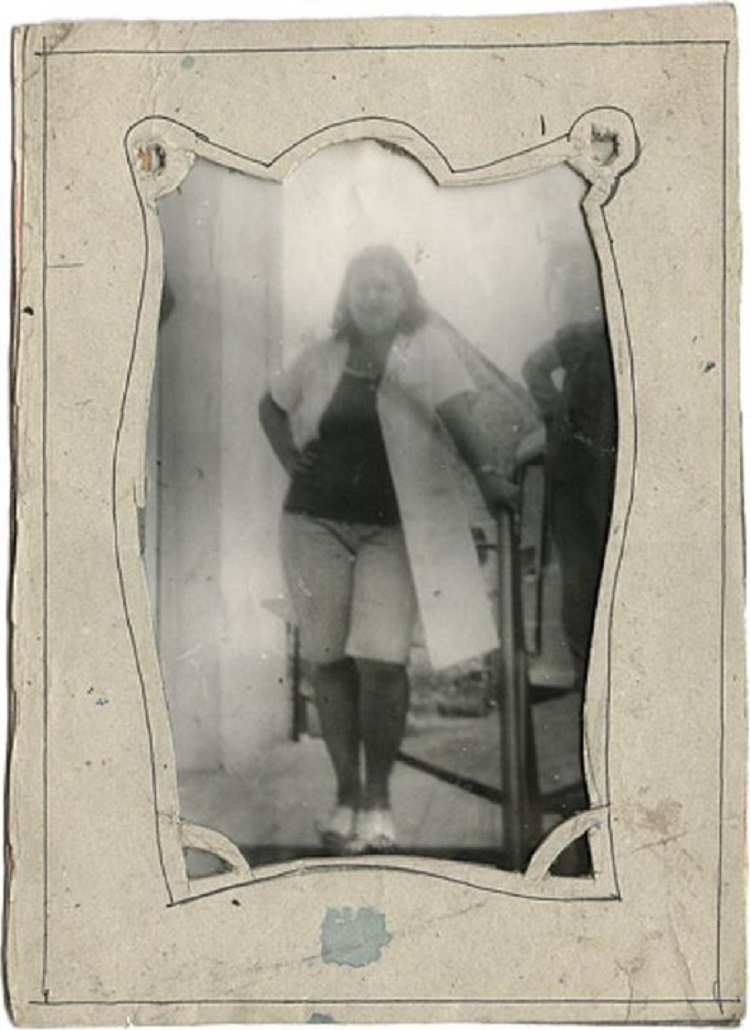
Miroslav Tichý, MT Inv. no.: 1-27, courtesy Tichy Ocean
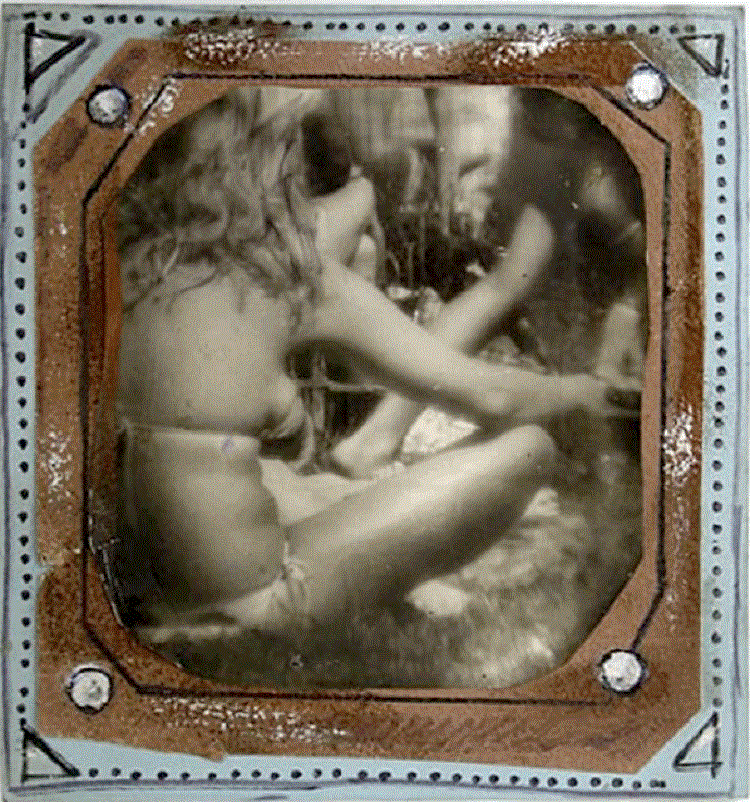
Girls with hand drawn frame.
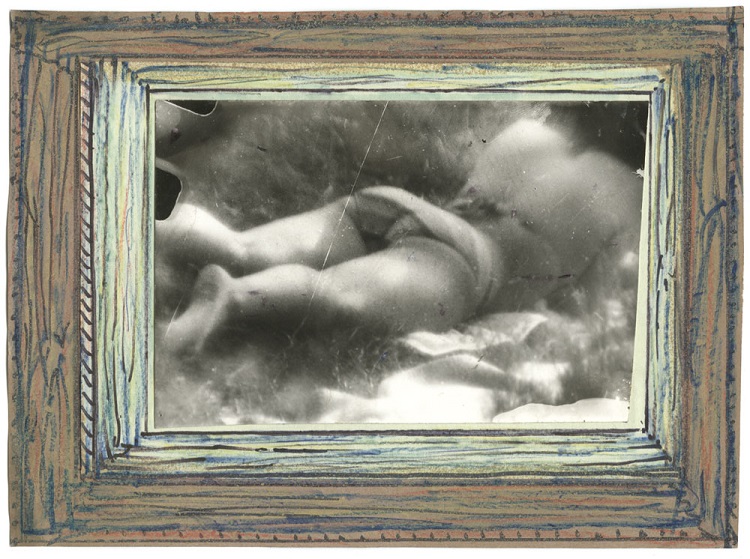
Miroslav Tichy, hand drawn frame.
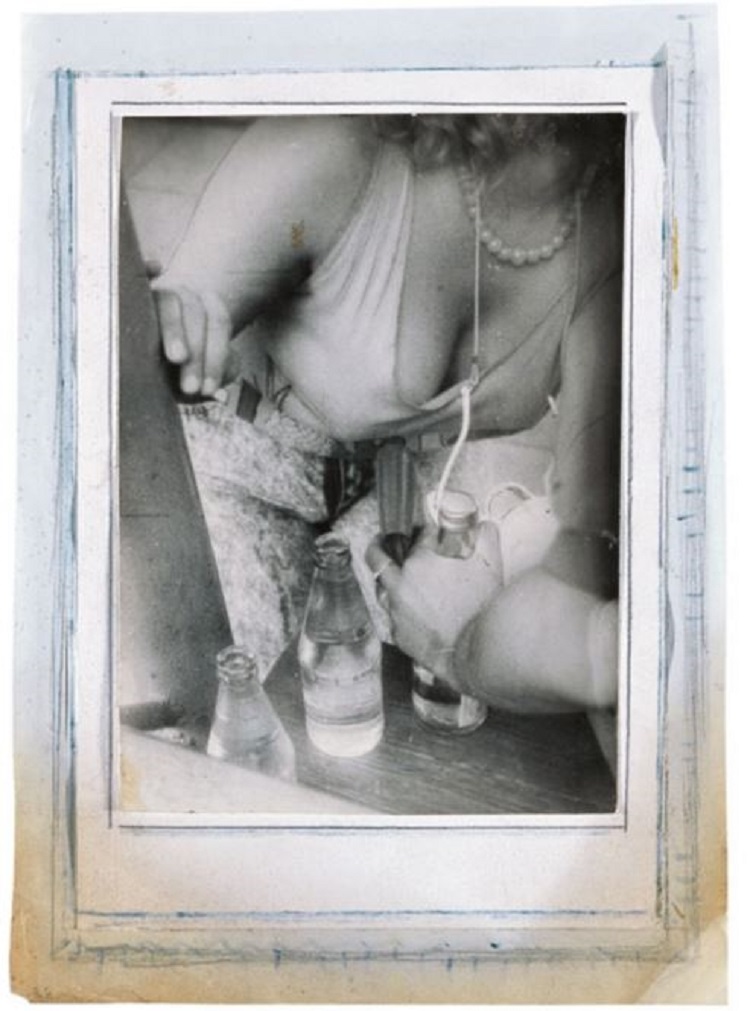
Miroslav Tichy, hand drawn frame.
And for this artist, most of his models were unsuspecting bathers at the local swimming area. It’s a shame that the police did not recognize the artist that he was and instead arrested him numerous times. I suppose that to them (and the ‘models’) he just looked like your average dirty old man…
Little did they know that his work has since been shown at galleries and museums in places like New York, London and Paris.
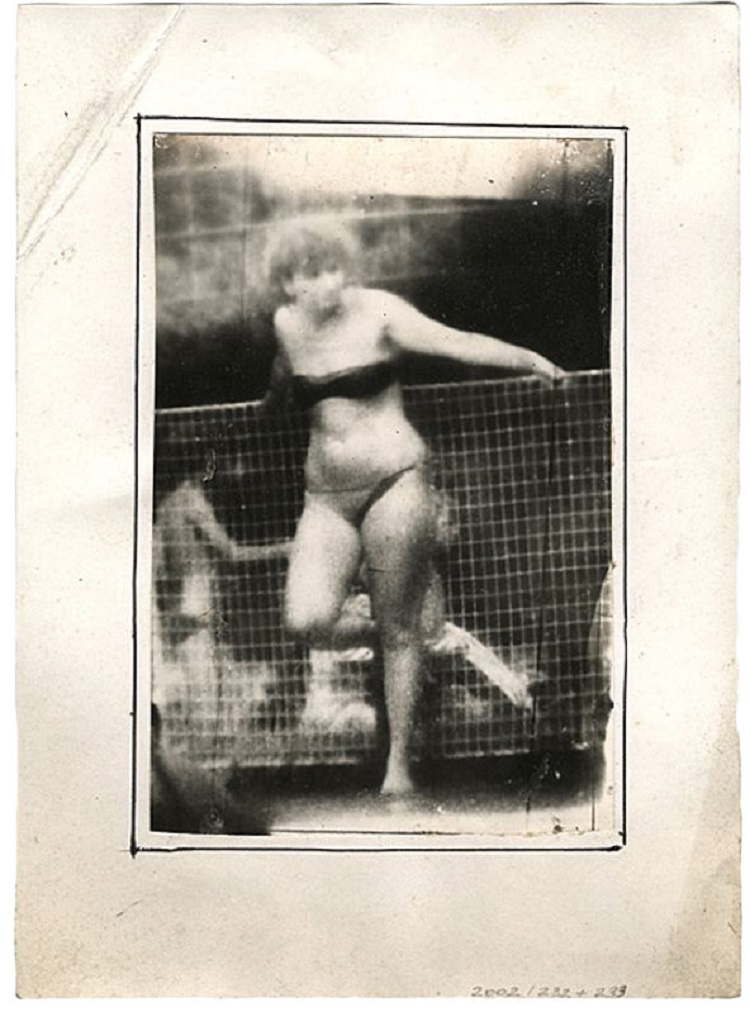
Miroslav Tichý, MT inv. no 2 – 232, by courtesy of Foundation Tichý Oceàn
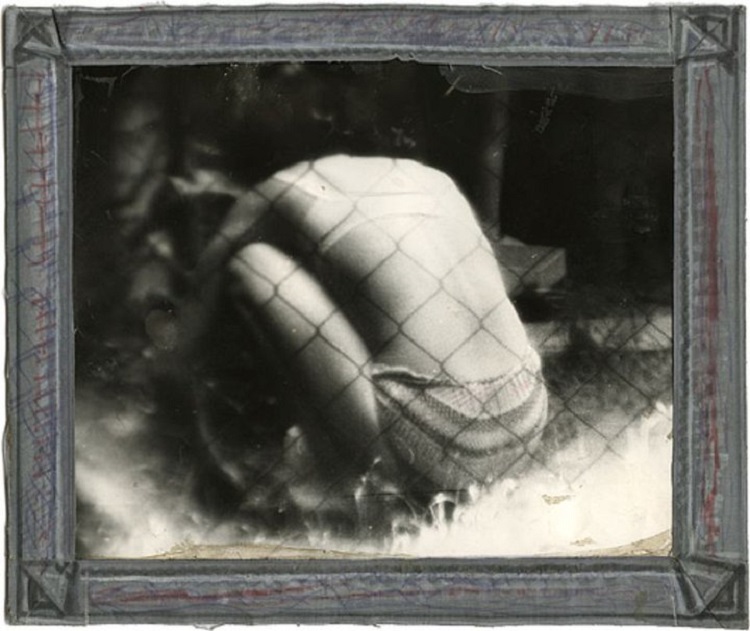
Miroslav Tichý, MT Inv. no.: 1-35, courtesy Tichy Ocean
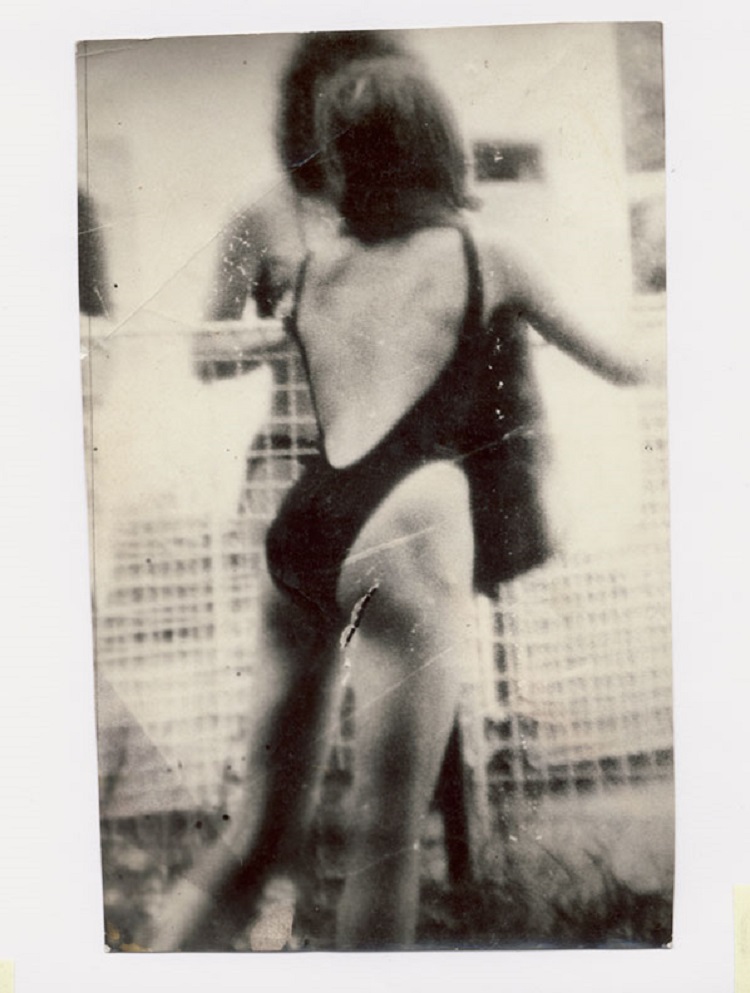
Miroslav Tichy, untitled, undated
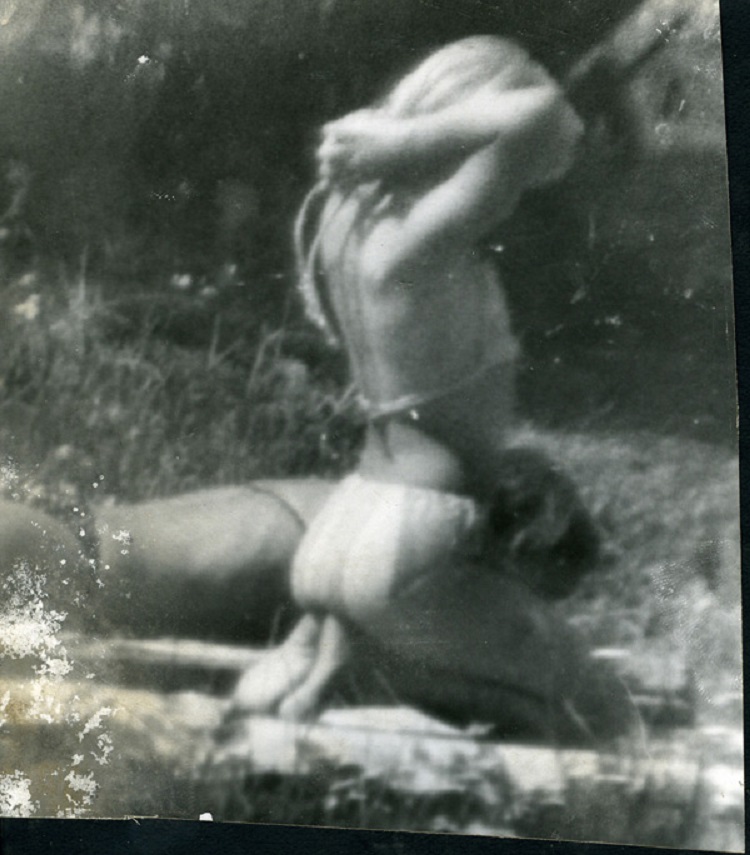
Miroslav Tichy, Untitled, Unmounted
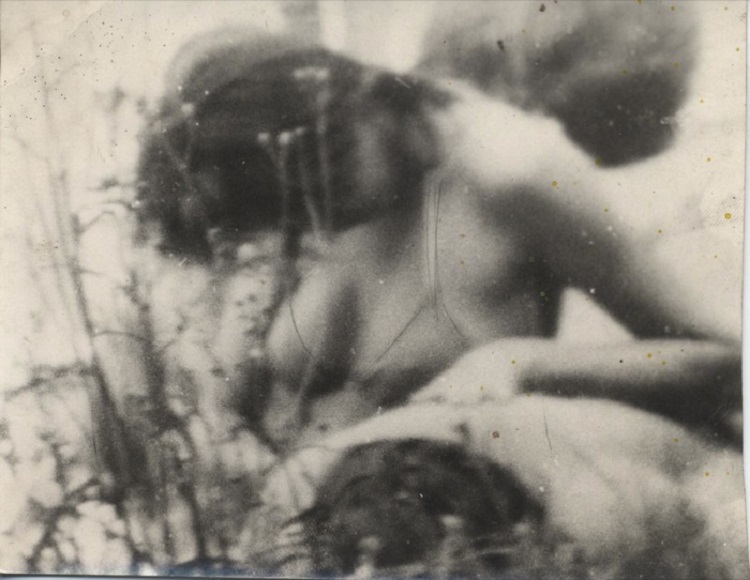
Miroslav Tichy, Untitled, Unmounted
This lonely man never traveled far in his life. In fact he died in the same town where he was born, only traveling briefly to Prague where he studied at Academy of Fine Arts in Prague under leadership of Jan Zelibsky. He was a good student and even received recognition within collective of his classmates for being very good draftsman, for his great talent and for his even unique personal sense of humour!
You can feel some of that coming through his own observations of his technical methods where he said, “First of all, you have to have a bad camera“, and, “If you want to be famous, you must do something more badly than anybody in the entire world.”
[youtube width=”750″ height=”420″]https://www.youtube.com/watch?v=V3sEyHtg0yc[/youtube]
Wikipedia adds: “During the years he wandered through Kyjov taking photographs with his crude cameras, the tall, shabby Tichý was tolerated by the townspeople but regarded as an eccentric. He shot about 90 pictures a day, returning to his disordered home to develop and print them.”
Cirkusworld states: “Tichý not only rejected the art world, but also the conventions of normal society. At a certain point he began to neglect his appearance and refused to change his clothes or bathe himself. It wasn’t long before he took on the appearance of a homeless tramp which put him on the fringes of society and in constant conflict with the authorities. Some have argued that he did so to protest against the Communists but it seems clear that if a protest was his intention, then such a protest was not against a certain form of government but against humankind in general. Needless to say, the authorities continued to incarcerate him for his idiosyncratic appearance and behavior.”
His pictures appear dreamlike, spotted, faded, surreal.
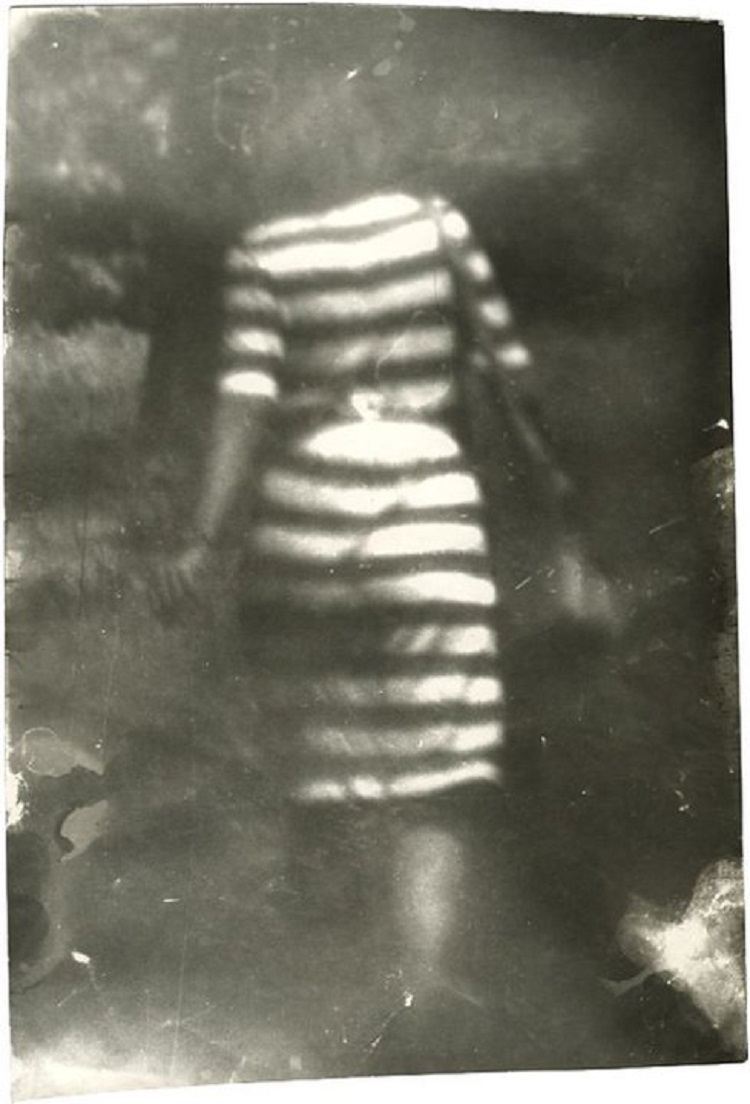
Miroslav Tichý, MT Inv. no.: 1-41, courtesy Tichy Ocean
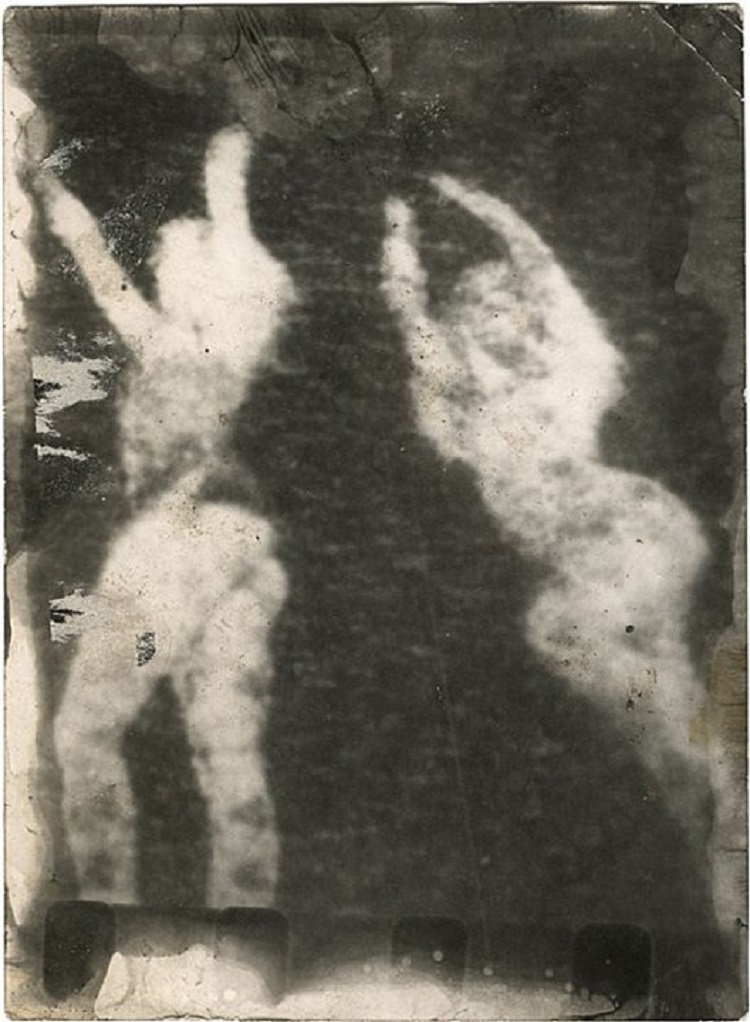
Miroslav Tichý, MT Inv. no.: 2-40, courtesy Tichy Ocean
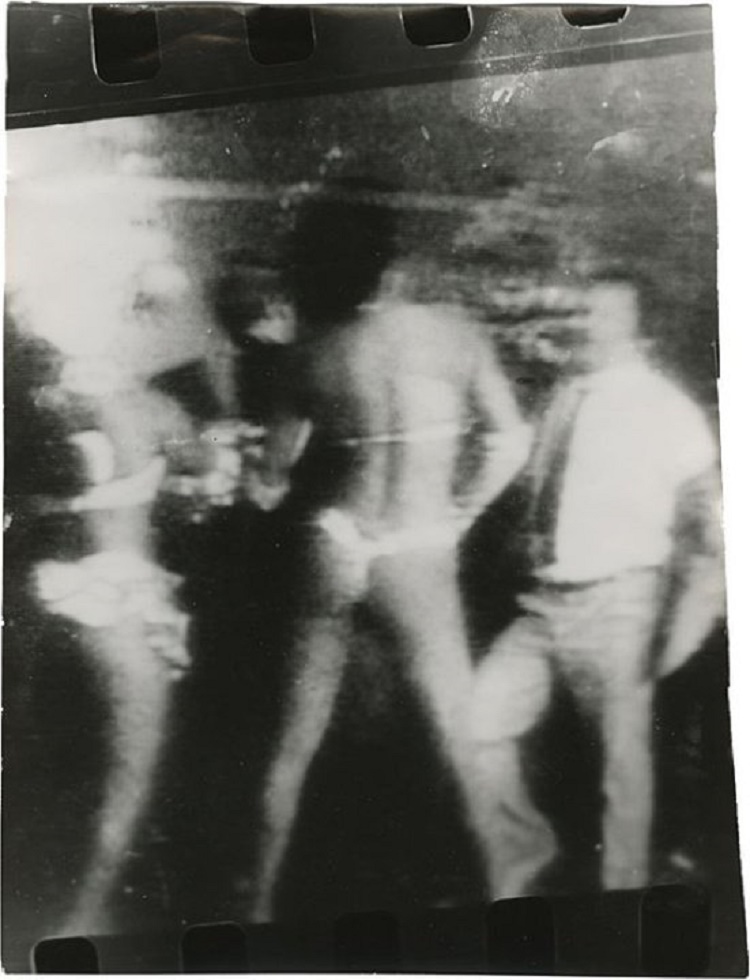
Miroslav Tichý, MT Inv. no.: 1-43, courtesy Tichy Ocean
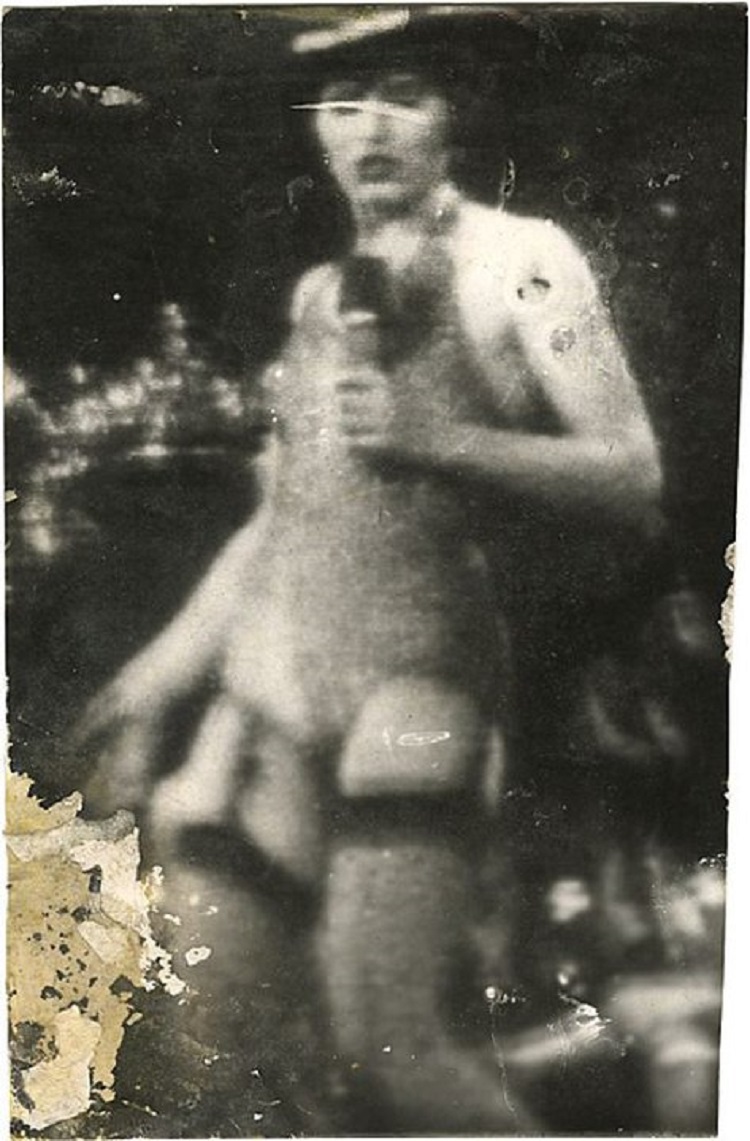
Miroslav Tichý, MT Inv. no.: 2-3, courtesy Tichy Ocean
“Tichý’s subtle photographs use themes of movement, composition and contrast, but the main theme is an obsession with the female body. Technically, his pictures are full of mistakes that compound the built-in limitations of his equipment — underexposed or overexposed, out of focus, blemished by dust in the camera, stained by careless darkroom processing.
Tichý explains, “A mistake. That’s what makes the poetry.”
Much attention has been paid to the erotic qualities of Tichý’s photographs. But it should be pointed out that any photograph of a scantily clad young woman can be deemed erotic, but that there is nothing lurid or pornographic about his photographs. Tichý also took a lot of photos away from the pool and of all sorts of women, young and old, heavy and thin. He also took photos of children and, more rarely, men. Although the public swimming pool was one of his favorite places to work, Tichý did not limit himself to this location. In fact, many photos were shot of his television set.
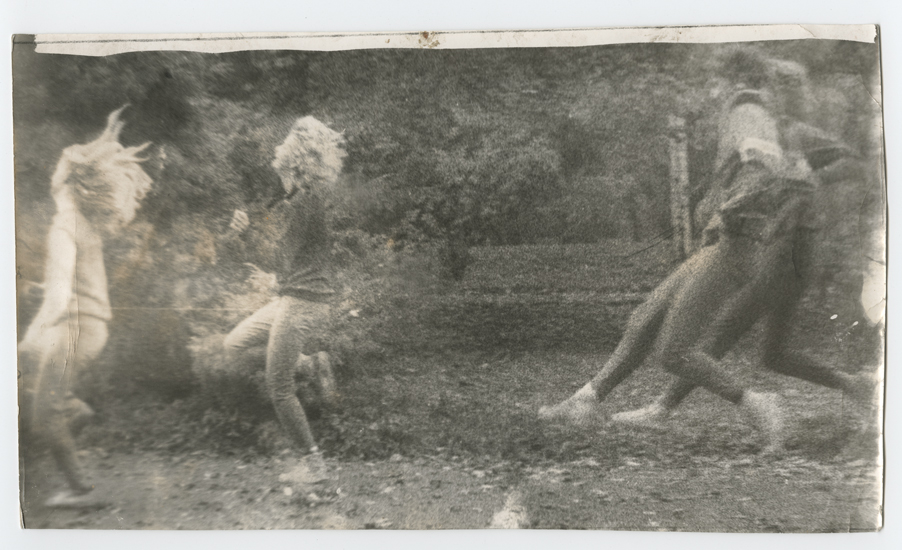
Miroslav Tichý, MT Inv. no: 1-205 courtesy of Foundation Tichy Ocean
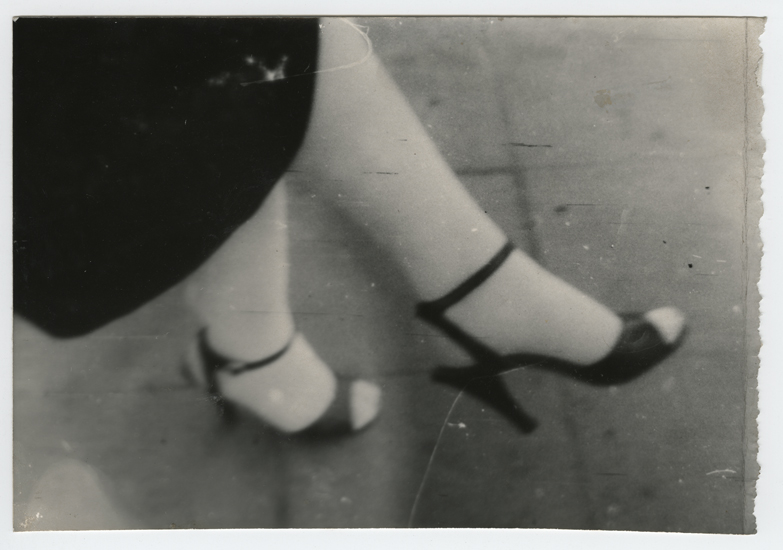
Miroslav Tichý, MT Inv. no: 1-37 courtesy of Foundation Tichy Ocean
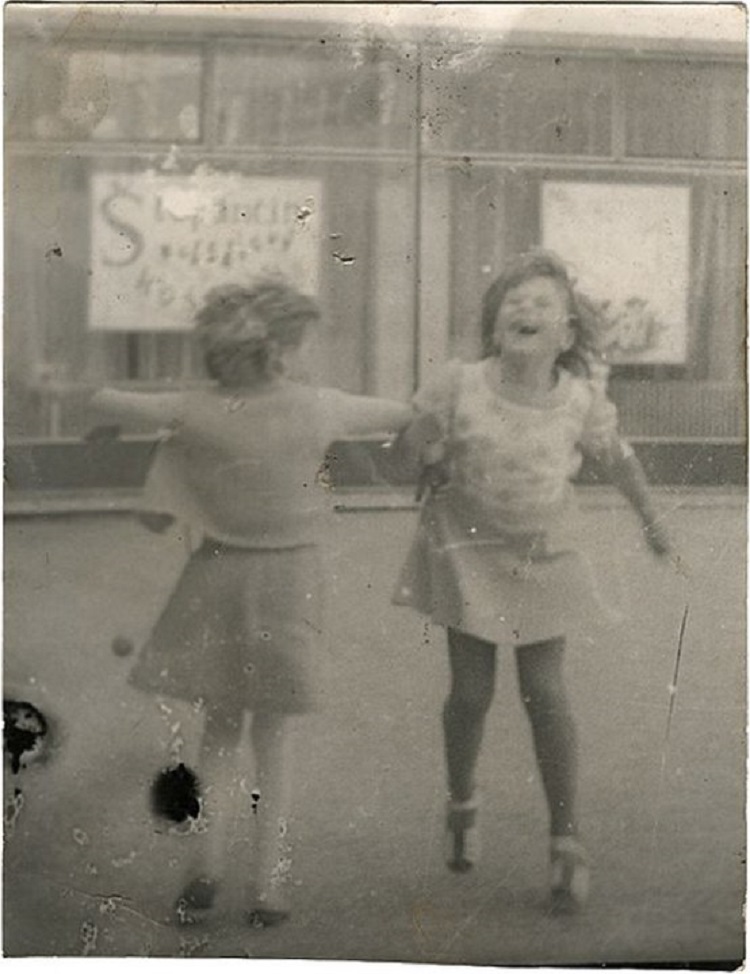
Miroslav Tichý, MT Inv. no.: 3-83, courtesy Tichy Ocean
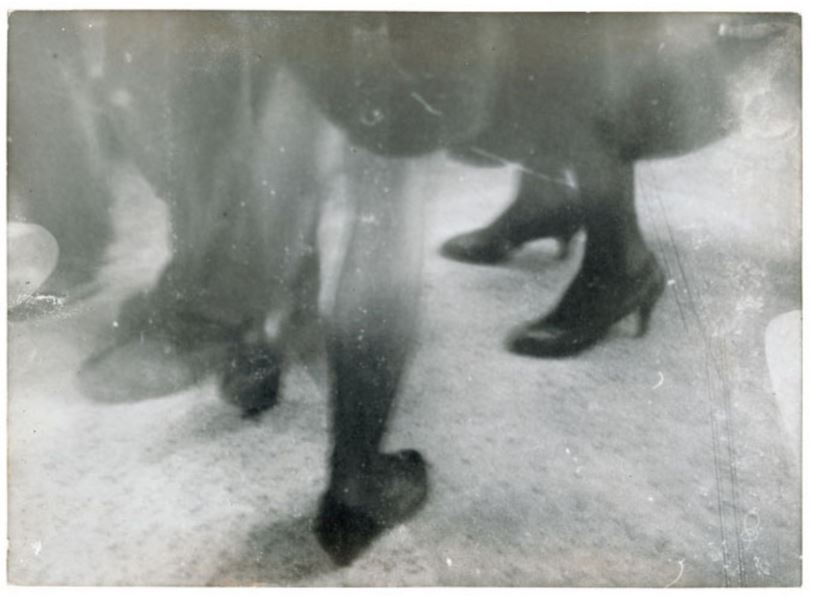
Miroslav Tichy, Untitled, undated.
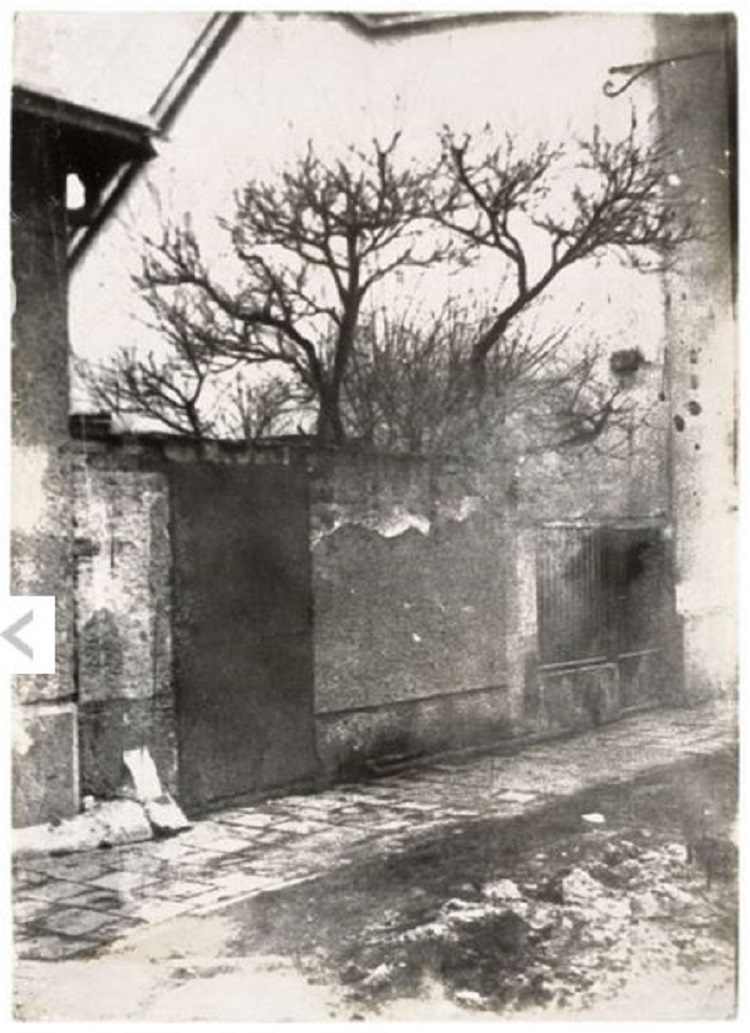
Miroslav Tichy, untitled, undated.
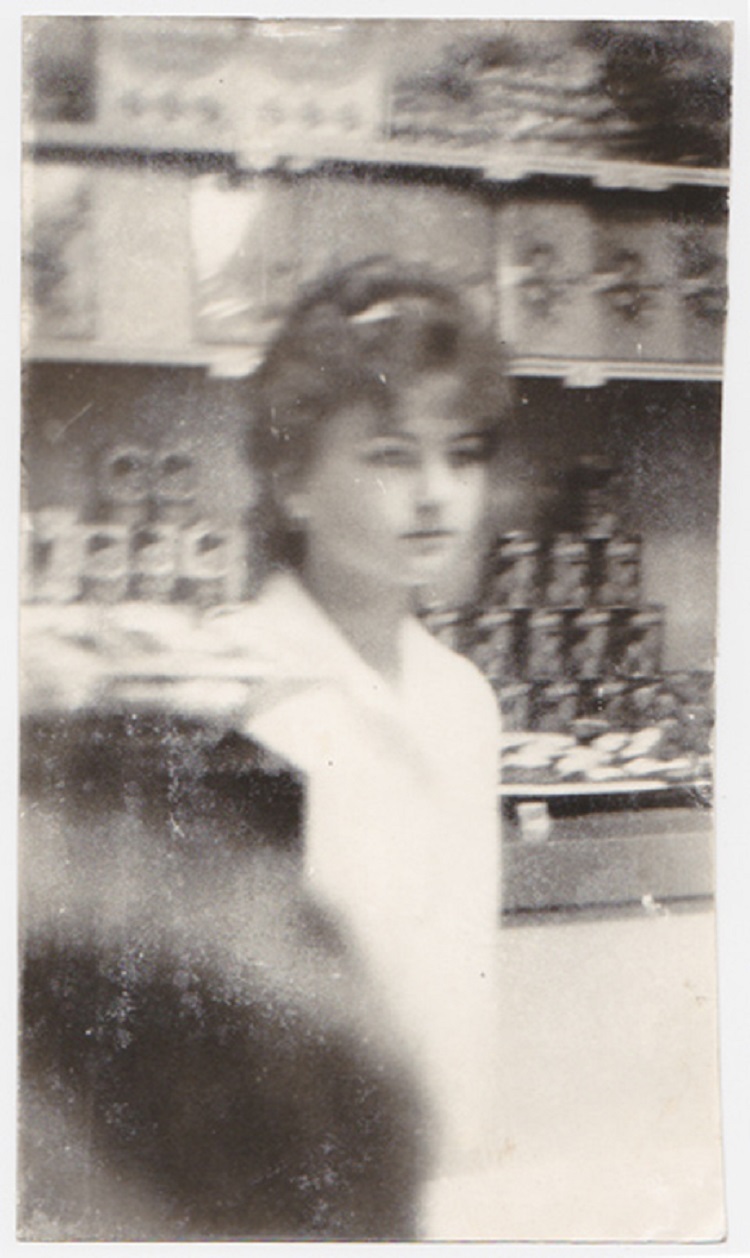
Miroslav Tichy, untitled, undated.
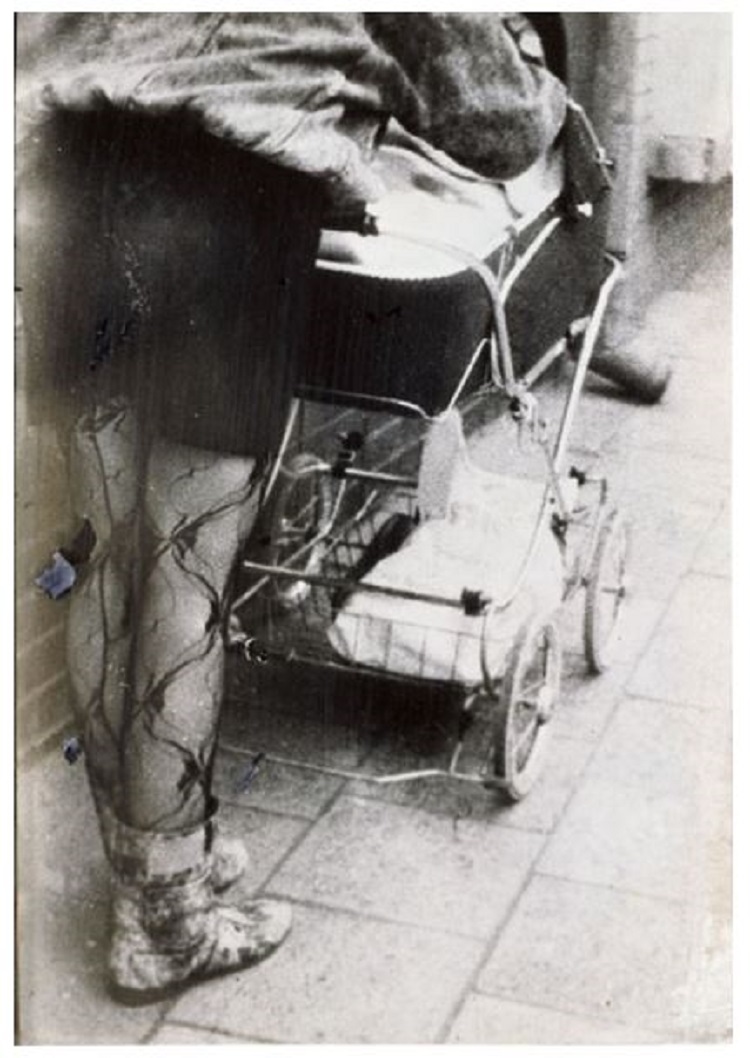
Miroslav Tichy, untitled, undated.
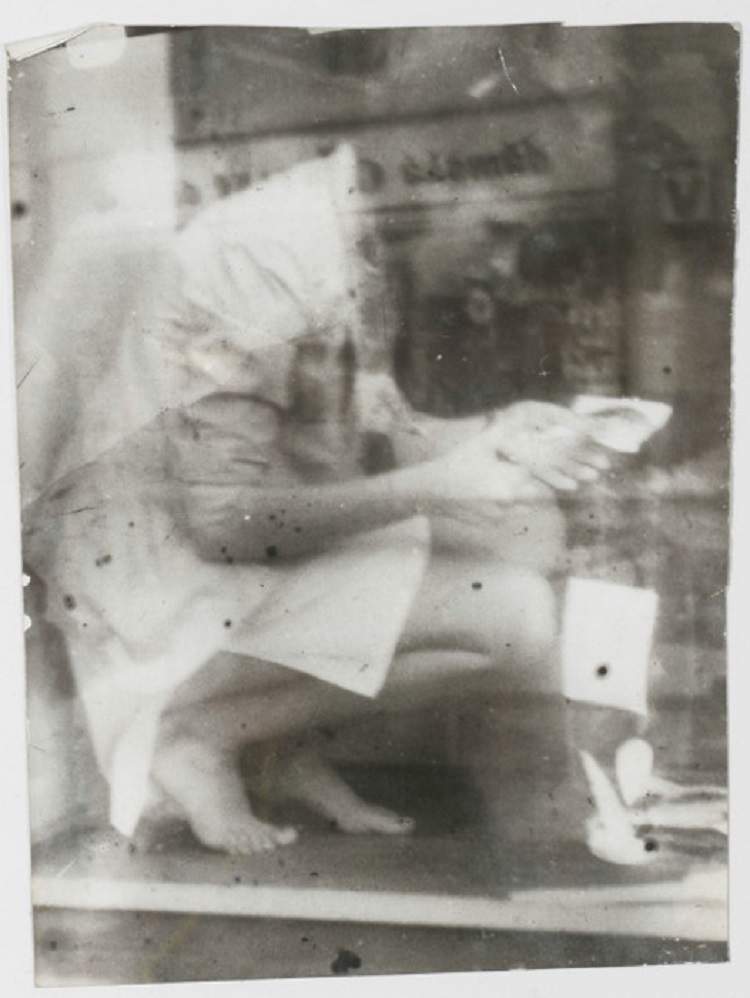
Miroslav Tichy, untitled, undated.
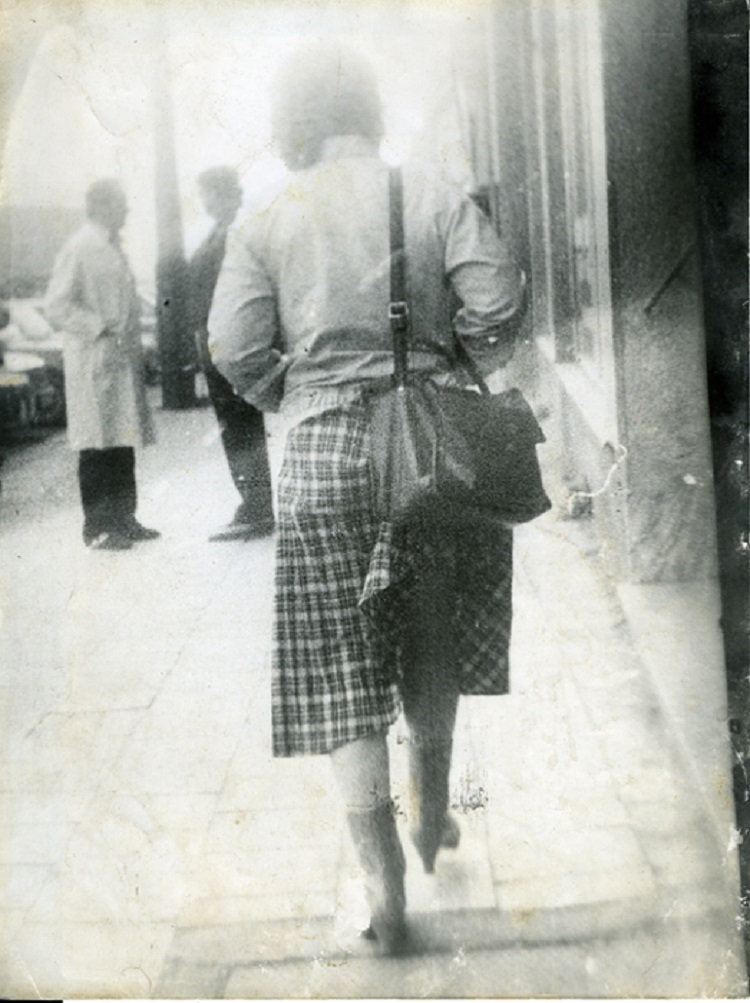
Miroslav Tichy, untitled, undated.
His use of the self descriptive title “Tarzan” is illustrative of two central characteristics; strength of mind and sense of humor. It is a humorous suggestion given that this man, an outsider locked up and living in poverty, could see himself as a sort of lord or king. It is, needless to say, said with tongue firmly planted in cheek but, like most humor, it has a serious intent. Tichý clearly sees himself as a sort of “ubermensch” and he proclaimed his status as a master artist long before he raised to prominence in the art world. As we would expect from a man who calls himself Tarzan, Tichý is self confident in the extreme. That his art is now exhibited in serious institutions and sold for high prices is confirmation of what he has known all along – that he is the “last classicist” and should be respected as such.
Regarding the conservation of his work, his works were undated, untitled and unnumbered. Instead, they were tossed aside and left to the elements. He never properly stored either prints or negatives. They were therefore exposed to dust, dirt, insects and so on. Yet somehow… this is what makes his imagery even more unique.
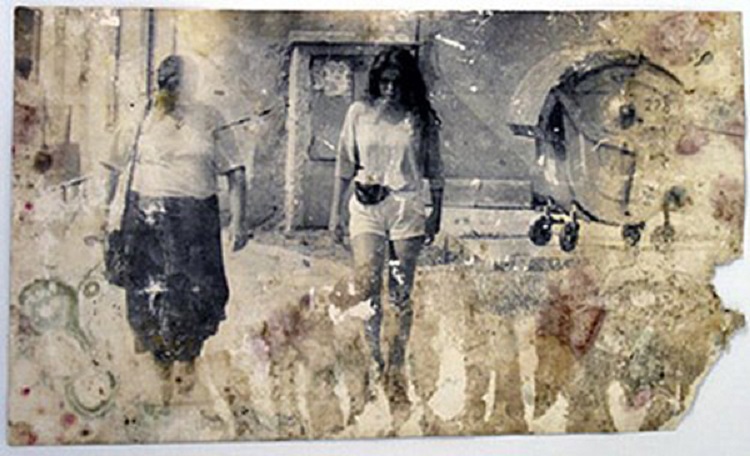
Miroslav Tichy, untitled, undated.
Enter Buxbaum with his keen eye for the artist’s work…
In 1981, Roman Buxbaum, a former neighbor befriended by Tichý when Buxbaum was a child, returned from exile in Switzerland. His family had long been owners of paintings and drawings by Tichý, and now Buxbaum discovered the photographic work, which had been kept a secret. Buxbaum began an effort to collect and preserve the artist’s deteriorating photographs. He says that over the next 25 years it was his good fortune to be the only person to see, collect and document Tichý’s work.
Tichý even made him presents of bundles of photographs, and Buxbaum bought more bundles from Tichý’s neighbor and “surrogate mother”, Jana Hebnarová, who has looked after Tichý since his mother’s death and been appointed his heir.
In 2006, Buxbaum said that he believed his to be the most complete collection of Tichý’s photographs, and that he had placed part of it with galleries for sale on commission, with the intention of making it available to museums and collectors to “bequeath it to the world of art”.
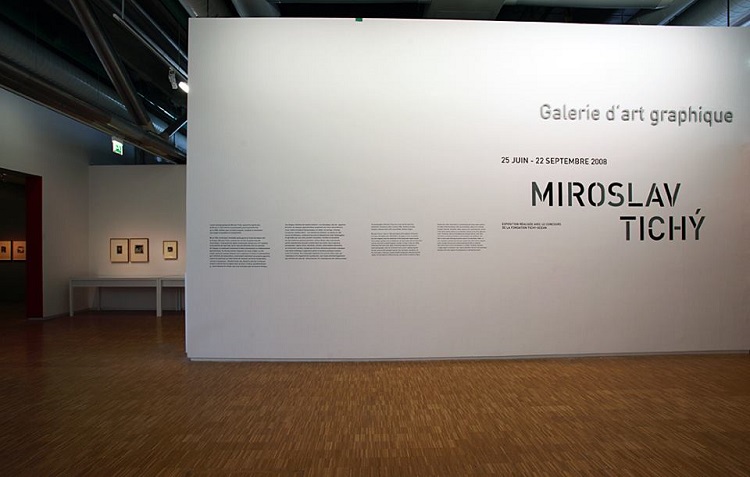
In 2009, it was announced that Tichý had severed all ties with Buxbaum and the Tichý Oceán Foundation’s website. In a notarized statement dated 22 January 2009, Tichý states that he made no agreement, written or oral, with Buxbaum to propagate his works, that Buxbaum exploits his works without authorization and violates his copyright, and that only he, Hebnarová and his lawyer have the right to decide on the use and propagation of his works.
I wonder how he would feel about Miroslav Tichy Books on Amazon.
The Tichy Ocean Foundation mentions their Artists for Tichy – Tichy for Artists collection and says that it “is based on the concept of exchange. Artists from around the world trade their works for the photographs of Miroslav Tichy, who also initiated the idea of trading works. When the Austrian painter Arnulf Rainer visited him in Kyjov in 1992, Tichý refused to sell him any of his works, but he was not opposed to trading. These beginnings eventually grew into an extensive collection united by one common factor: All the traded works are by artists who admire Tichý’s work and his attitude of avoiding public recognition and listening only to his obsession and will to create. Tichý has become an artists’ artist.”
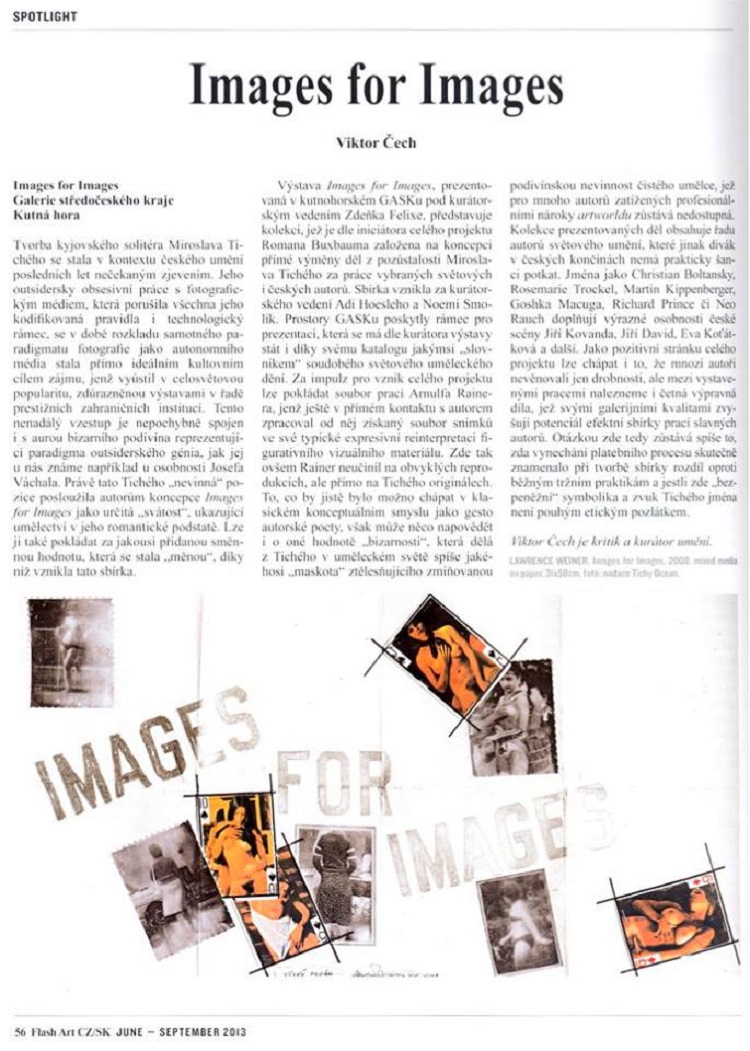
Flash Art CZ/SK #27, 2013
Fellow blogger, MessyNessy, says:
“Born in 1926, Tichý could have become one of the prominent painters of the modernist Communist regime. He was accepted to the Academy of Fine Arts in Prague, but after the Communist takeover in 1948, he grew defiant of requirements to draw socialist workers in overalls rather than female nudes and quit the prestigious school. Tichý was quickly identified as a rebel by the oppressive regime who began making attempts at ‘normalizing’ him (whatever that entailed). After his compulsory military service, Tichý became more eccentric.”
Our Czech speaking friends can watch a very interesting one hour documentary about this artist…
[youtube width=”750″ height=”420″]https://www.youtube.com/watch?v=WMjrZUdOJJM[/youtube]
From Tichy: “People ask me: What are you, Mr. Tichy? Are you a painter? Are you a sculptor or a writer?” He sums it all up for us in his own words…
“I answer: I am neither this or that. You know who I am? I am Tarzan Retired.”
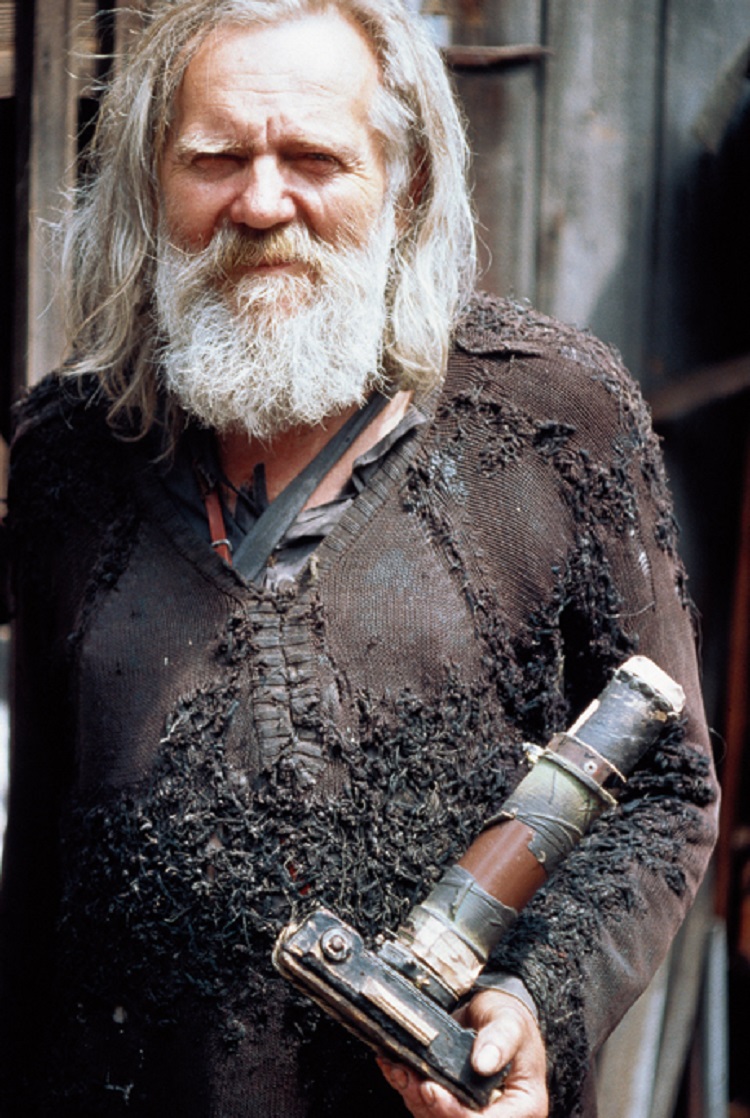
Miroslav Tichý with his camera, photo © Roman Buxbaum, 1987
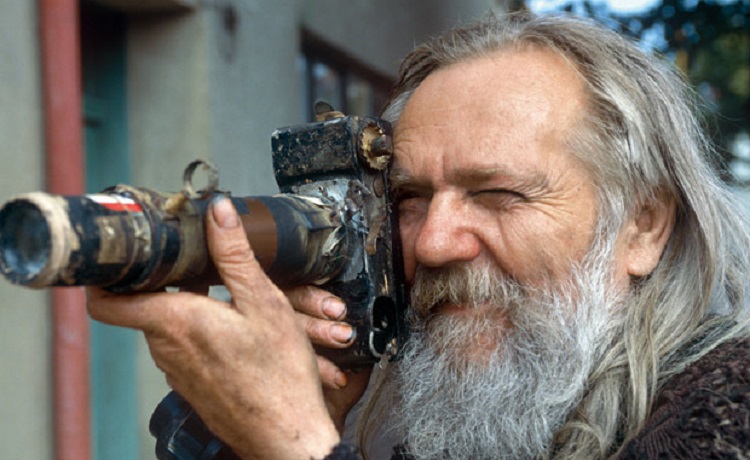
It is the natural imperfections of reality that creates poetry… Source: NotBored
I think Tichy was a witness to everyday life and found meaning in the moments we so overlook. His art and photographs captured moments when we are unaware, just passing through these moments of being. A pervert, perhaps… but more so a voyeur who felt an outsider looking in – and through his crude yet effective lens, we too can capture the ordinary in a most extraordinary way of seeing.
* * * * *
Thank you in advance for your support…
You could spend hours, days, weeks, and months finding some of this information. On this website, we curate the best of what we find for you and place it easily and conveniently into one place. Please take a moment today to recognize our efforts and make a donation towards the operational costs of this site – your support keeps the site alive and keeps us searching for the best of our heritage to bring to you.
Remember, we rely solely on your donations to keep the project going.
We appreciate you more than you know!
If you have not already subscribed to get TresBohemes.com delivered to your inbox, please use the form below now so you never miss another post.




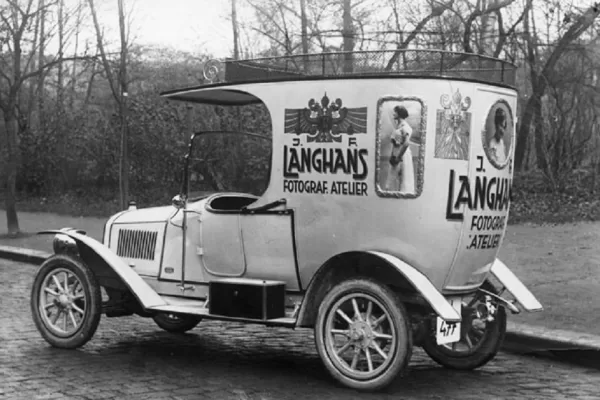
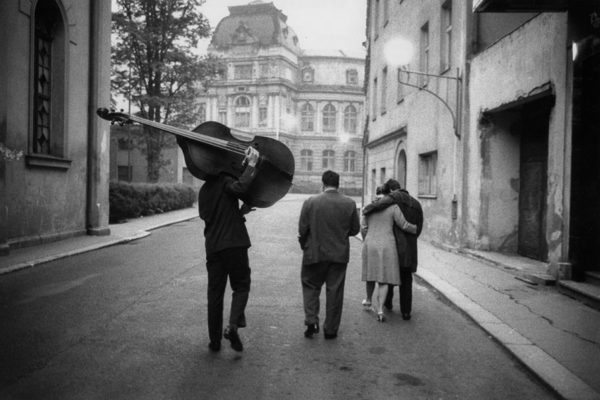
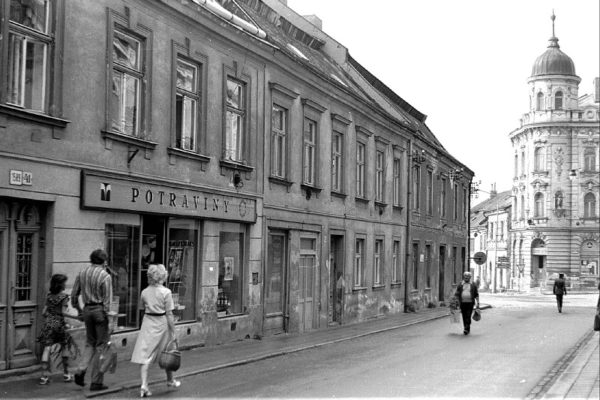















Very interesting story, thanks for sharing!
A very interesting post on a very interesting artist. I think the unique personalities are a gift to us.